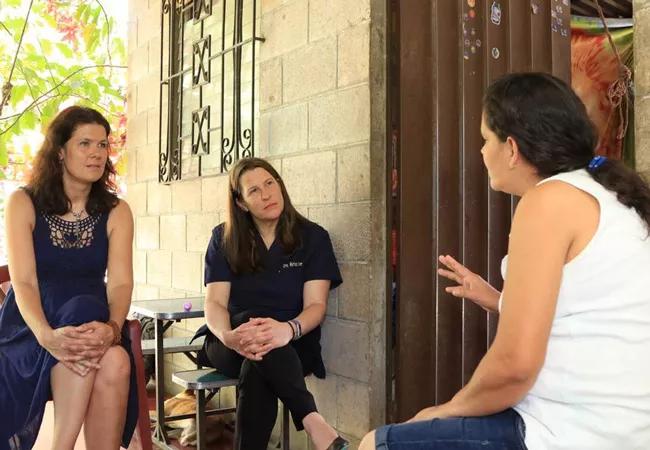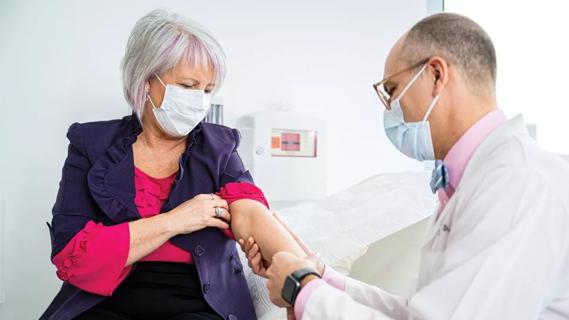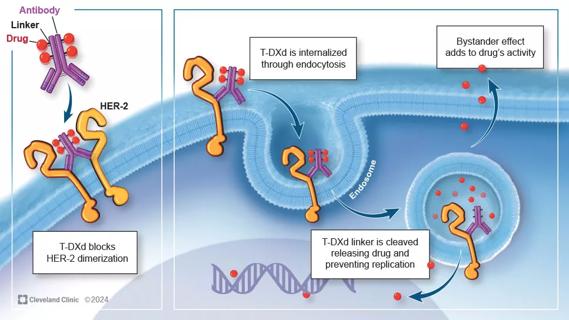Cervical cancer remains a global health challenge
Advertisement
Cleveland Clinic is a non-profit academic medical center. Advertising on our site helps support our mission. We do not endorse non-Cleveland Clinic products or services. Policy
Cervical cancer kills 250,000 women every year around the world. Most deaths occur in resource-poor areas, but even in wealthy countries like the United States some populations suffer disproportionate incidence and mortality rates. Low-cost innovations in screening and treatment methods are essential to reach underserved populations all around the world.
Early screening of precancerous lesions through cytology has significantly reduced mortality in some regions, but Pap smears require infrastructure and trained staff that are not always available. Tests for high-risk types of human papillomavirus (HPV), the causal agent of the vast majority of cervical cancer cases, have significantly improved the sensitivity of cervical cancer screening and allow us to increase screening intervals. While these screening innovations are essential, treatments for cervical precancer remain too expensive or too cumbersome for successful deployment in low-resource areas.
In 1997, I founded Basic Health International (BHI), an organization dedicated to eradicating cervical cancer. We see potential for global impact in these three arenas:

Joanna Stefanska (left), Executive Director, Rising Tide Foundation (a Switzerland-based philanthropy that funds cancer research, including Basic Health International’s work, and other causes) and Miriam Cremer, MD, (center) make a home visit to a patient in El Salvador.
Advertisement
El Salvador has one of the highest cervical cancer mortality rates in the world. Lack of resources mean that clinics are understocked and understaffed and weeks can elapse between a woman’s initial clinic visit and receiving results or treatment. As few as 19 percent of El Salvadoran women ever receive a screening, and less than 40 percent of these women receive adequate follow-up.
The Cervical Cancer Prevention in El Salvador (CAPE) project, which ran from 2012 to 2017 as a collaboration between BHI and the Salvadoran Ministry of Health, screened over 28,000 women using a low-cost HPV test. Our aim was to demonstrate the feasibility of HPV-based screening followed by immediate treatment versus the conventional strategy of referring HPV-positive women to colposcopy prior to treatment. Thus, women who tested HPV positive were assigned to either a strategy that offered immediate treatment or colposcopy management. In phase 1 of the project (n=2,000), 98.3 versus 68.8 percent of HPV-positive women completed treatment with the immediate treatment versus conventional strategy. When the cohort grew (n=8,000), the difference was even greater, at 88.4 versus 44.2 percent. The immediate treatment strategy was so effective that in phase 3 (n=18,000), all women were managed through the immediate treatment paradigm.
Today, BHI is working with the Ministry of Health in El Salvador to launch a national expansion of CAPE. Our goal is to bring the HPV-based screen-and-treat paradigm to the global stage so that other countries can use it as a model to develop their own programs.
Advertisement
Approximately 12 percent of women invited declined to participate in CAPE. Preliminary studies revealed that privacy and modesty concerns were reasons why some women in El Salvador routinely fail to attend cervical cancer screening programs.
Since one of the advantages of low-cost HPV testing is that patients can self-collect the necessary sample, we designed a study to evaluate the use of this modality as a screening alternative. Out of 1,989 women in the study, 93.9 percent agreed to participate and all but two out of 1,867 consented women performed self-sampling. All women with positive results were offered treatment or referral to adequate care.
We have also piloted an HPV self-sampling protocol among transgender men in El Salvador. Out of 35 individuals, 23 accepted screening, and we were able to treat three individuals with precancerous lesions. Thus, HPV self-sampling is an exciting screening alternative that can reach underserved populations in a range of settings.
Cryotherapy, the standard of care for cervical precancer in many low-resource settings, uses cryogenic gas to freeze lesions. Although simple to administer, the gas can be costly, scarce and difficult to store and transport. Alternative treatments that are portable, inexpensive and do not require gas are urgently needed.
We have collaborated with medical device manufacturers to develop two devices: the CryoPen®, a non-gas cryotherapy machine, and a new handheld thermoablator, a device that uses heat rather than cold to treat precancer. The efficacy and safety of these technologies are being tested in an NIH-funded clinical trial taking place in El Salvador, Colombia and Peru. We will be adding an arm of this trial in China.
Advertisement
Our team also will begin a trial to develop a standardized, patient-centered protocol for thermoablation in July in central Mexico. This trial is also NIH-funded.
These projects offer potential game-changers for cervical precancer treatment that can complement point-of-care screening technologies.
There is both a need and a place for alternatives to existing cervical cancer prevention methods. Our research is focused on developing a range of effective and low-cost screening and treatment technologies, coupled with innovative implementation methods.
Cleveland Clinic has a long history of investigating cervical cancer management in under-resourced areas of the world. I want to acknowledge Jerome (Jerry) Belinson, MD, Chair of Cleveland Clinic’s Ob/Gyn Department from 1990-2000, who pioneered development of low-cost screening and treatment algorithms for cervical cancer in underserved populations. I, along with Dr. Belinson and others involved in this research hope our efforts will lead to nothing less than eradication of cervical cancer worldwide.
Dr. Cremer is Director of Global Heath Research for Cleveland Clinic’s Ob/Gyn & Women’s Health Institute. Read her recent study.
Advertisement
Advertisement

First-of-its-kind research investigates the viability of standard screening to reduce the burden of late-stage cancer diagnoses

Global R&D efforts expanding first-line and relapse therapy options for patients

Study demonstrates ability to reduce patients’ reliance on phlebotomies to stabilize hematocrit levels

A case study on the value of access to novel therapies through clinical trials

Findings highlight an association between obesity and an increased incidence of moderate-severe disease

Cleveland Clinic Cancer Institute takes multi-faceted approach to increasing clinical trial access 23456

Key learnings from DESTINY trials

Overall survival in patients treated since 2008 is nearly 20% higher than in earlier patients